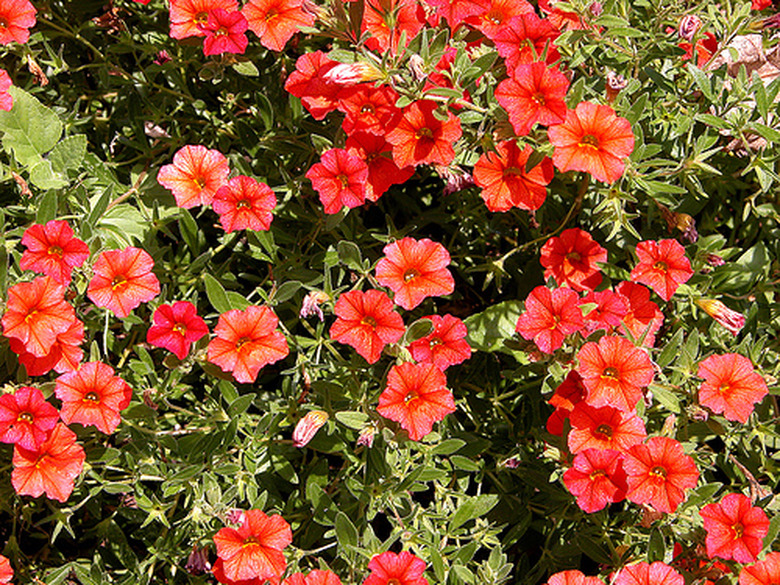How To Care For Calibrachoa
Calibrachoa is a genus of evergreen perennials that are closely related to petunias. They grow between four and eight inches in height and bloom during the entire duration of summer, usually until the first frost of fall. The flowers can be blue, pink, lavender or coral in color and resemble bells. Calibrachoa produces numerous blossoms every year, earning it the common name "million bells."
Step 1
Plant calibrachoa after the final frost of winter in a location that receives full sunlight. Add peat moss to the soil prior to planting to increase drainage and make the soil slightly more acidic, which calibrachoa prefers.
Step 2
Water calibrachoa plants once a week, keeping the soil fairly moist. This plant is extremely drought resistant and does not require large amounts of water. Increase watering to twice per week during extremely hot weather.
- Calibrachoa is a genus of evergreen perennials that are closely related to petunias.
- Water calibrachoa plants once a week, keeping the soil fairly moist.
Step 3
Fertilize once a month using a balanced 10-10-10 NPK fertilizer. Water the soil thoroughly before and after applying fertilizer to release the nutrients into the soil. Follow the manufacturer's directions for proper dosage.
Step 4
Spread about one inch of mulch over the soil around the calibrachoa to conserve moisture and release additional nutrients into the soil. Refresh the mulch whenever it begins to decompose.
Step 5
Transplant calibrachoa into a container and move inside once winter begins. Calibrachoa cannot survive in extremely low temperatures but will need a warm, stable environment to continue growth. Replant outdoors after the final frost of winter.
- Fertilize once a month using a balanced 10-10-10 NPK fertilizer.
- Transplant calibrachoa into a container and move inside once winter begins.
Care For Calibrachoa
Calibrachoa (Calibrachoa x hybrida or Calibrachoa group) split from the petunia family (Petunia group) in 1989, but the two plants share similar needs for water, soil and temperature. The plant needs regular watering, every week in the growing season, and more if you grow it in a container. Allow the soil to dry out completely between waterings. Calibrachoa is drought tolerant, but performs best with adequate water. Plant calibrachoa in soil that's well-draining and rich in organic material for the best results. Unlike petunias, calibrachoa will not benefit from pinching off spent flowers; as a hybrid, calibrachoa doesn't produce seeds from spent flowers, so removing those flowers doesn't encourage the plant to produce more.
Things Needed
- Peat moss
- Fertilizer
- Mulch
- Planter
Tip
Calibrachoa do not require pruning or the removal of dead flowers to continue to grow and bloom. Calibrachoa can survive the winter in mild climates, but at least one plant should be brought inside just in case. Grass clippings and shredded leaves are the recommended mulches for calibrachoa.
References
- Kentucky Garden Flowers
- Book: The Carolina Gardener's Guide; Toby Bost and Jim Wilson; 2005
- Book: Annuals for Every Purpose; Larry Hodgson; 2002
- Missouri Botanical Garden: Calibrachoa (Group)
- Missouri Botanical Garden: Petunia (Group)
- Floridata: Calibrachoa X Hybrida
- PW Proven Winners: To Deadhead or Not to Deadhead...
- The New Sunset Western Garden Book; Kathleen Norris Brenzel
